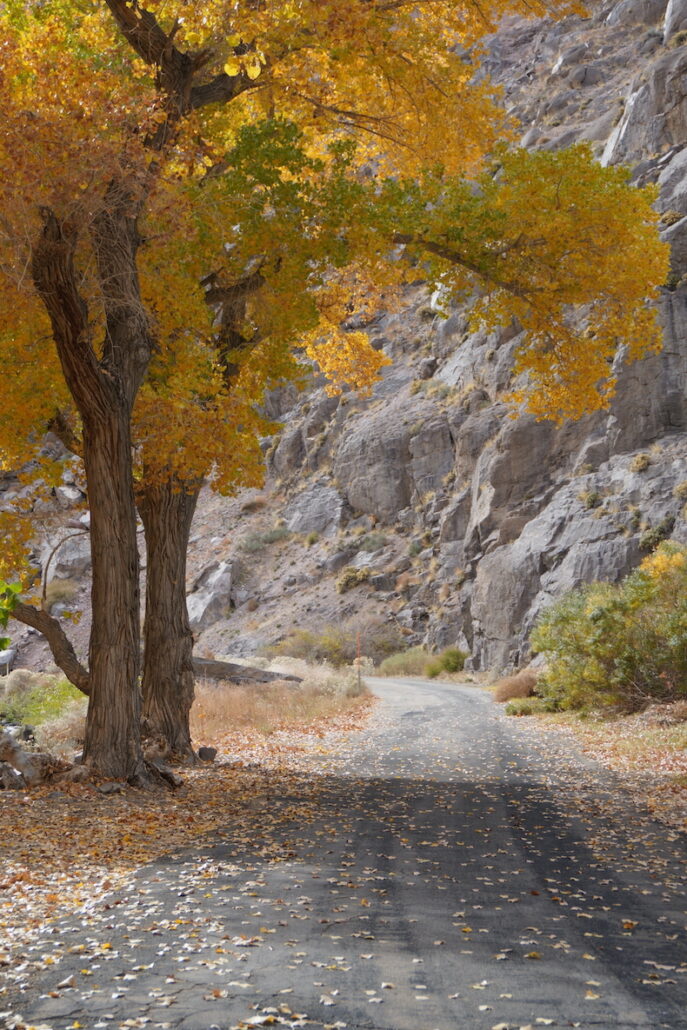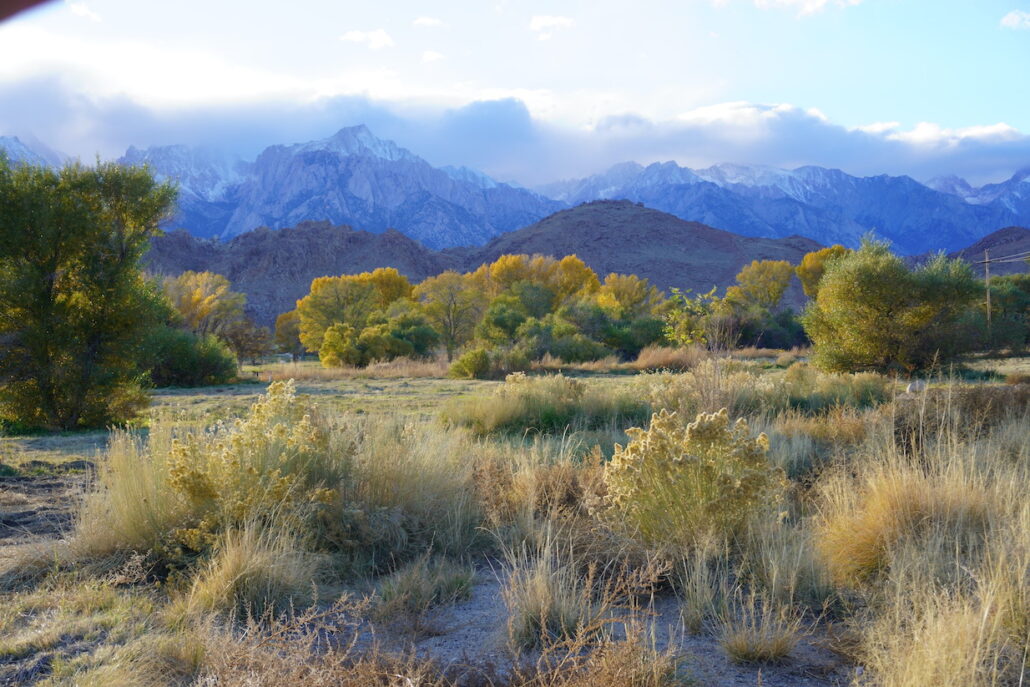











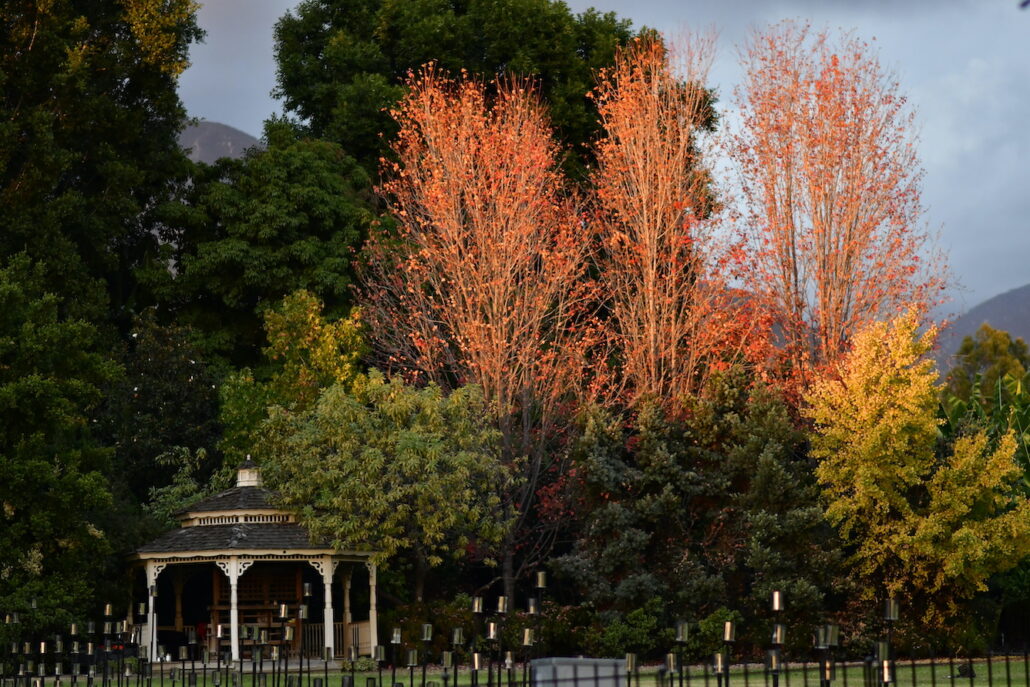
If you’re in Southern California this weekend, the Los Angeles County Arboretum and Botanic Garden is the place to go for fall color, which is just beginning to take off.
According to Botanical Information Consultant, Frank McDonough, things are at about 10-20% right now.
Even though it’s December, there is still fall color to find, if you know where to look.
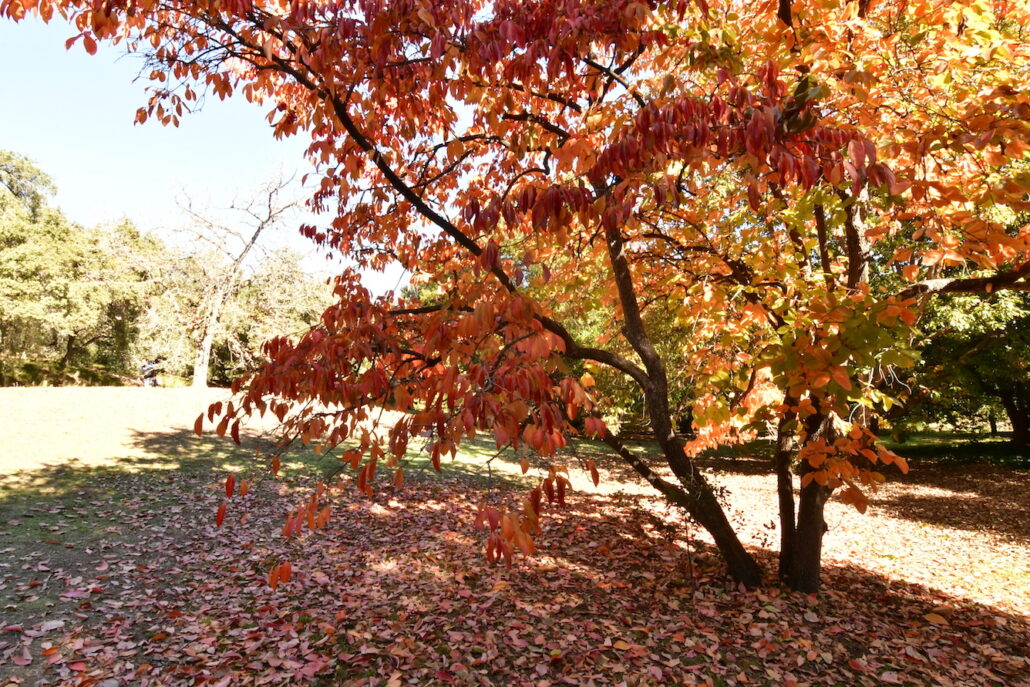
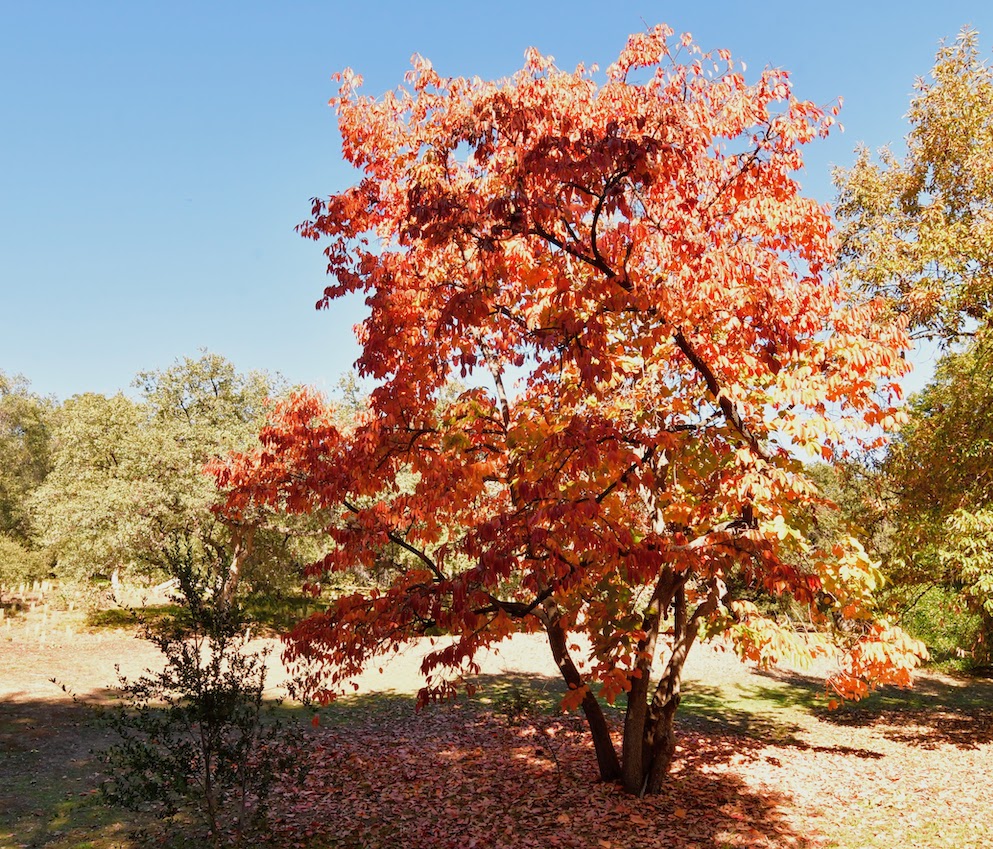
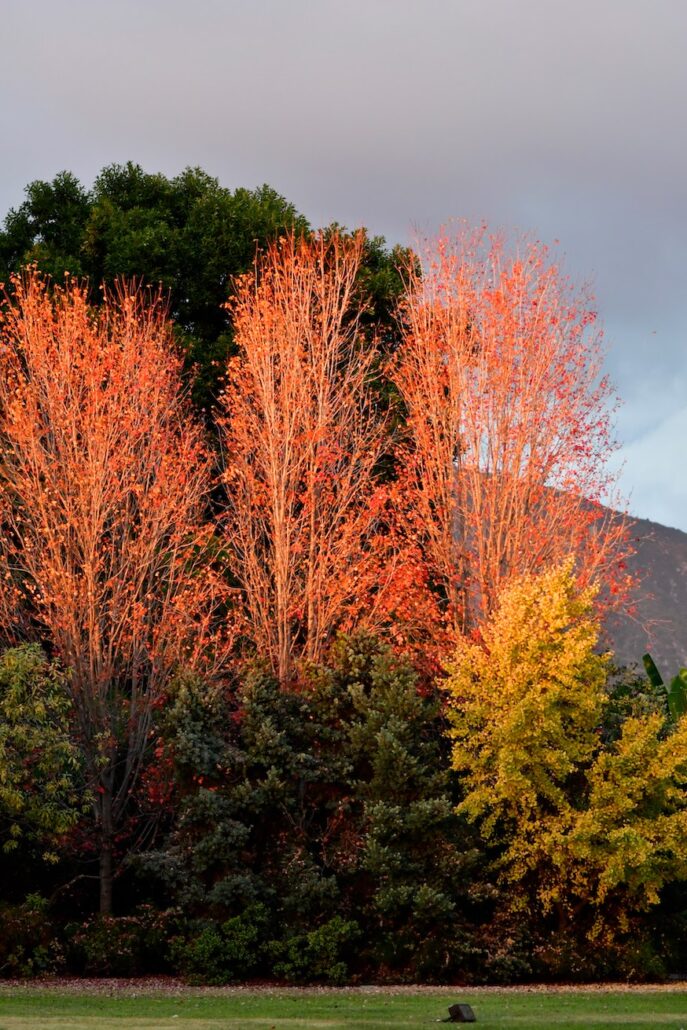
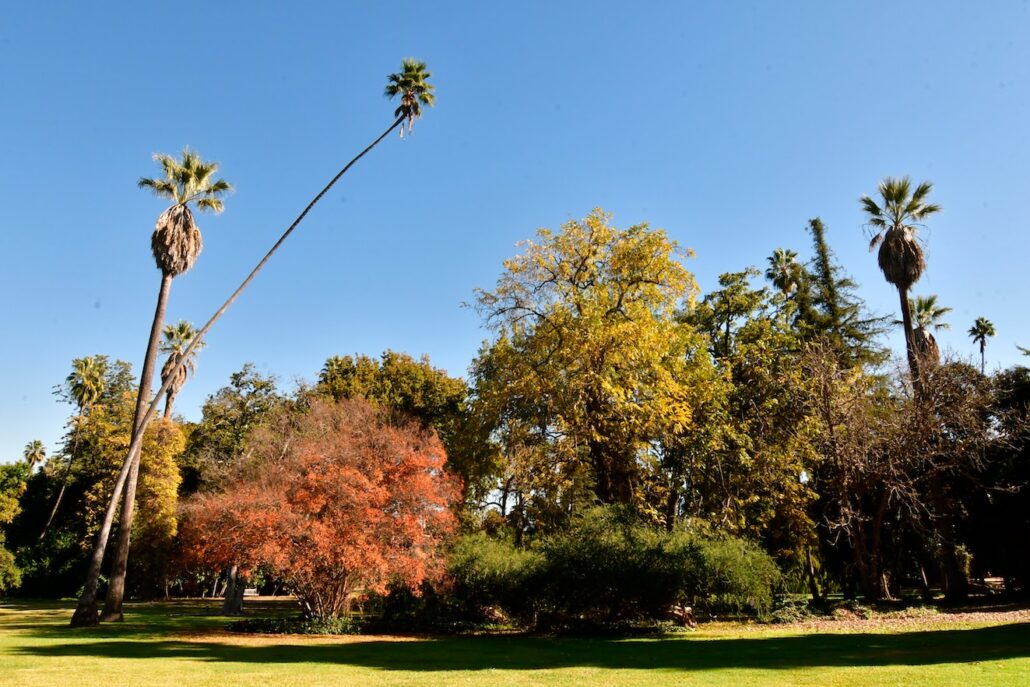
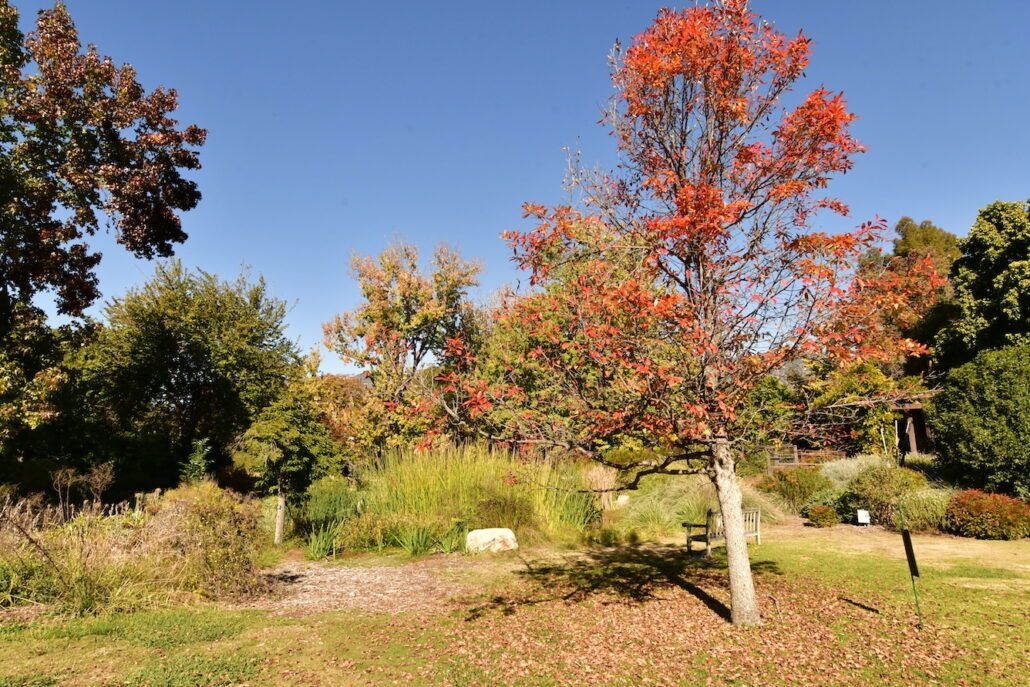
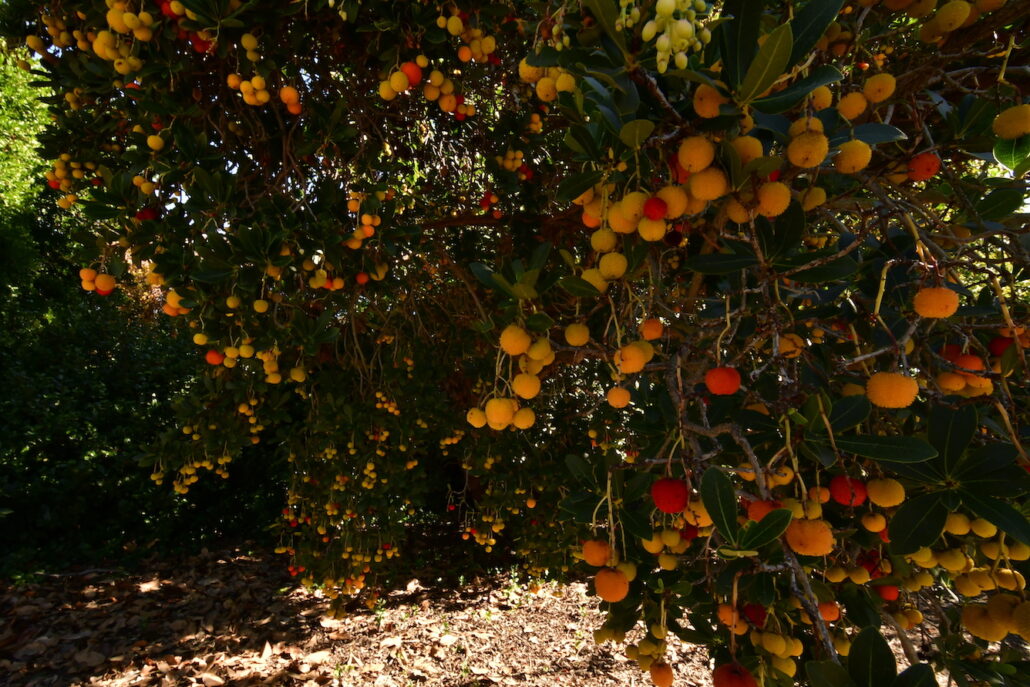
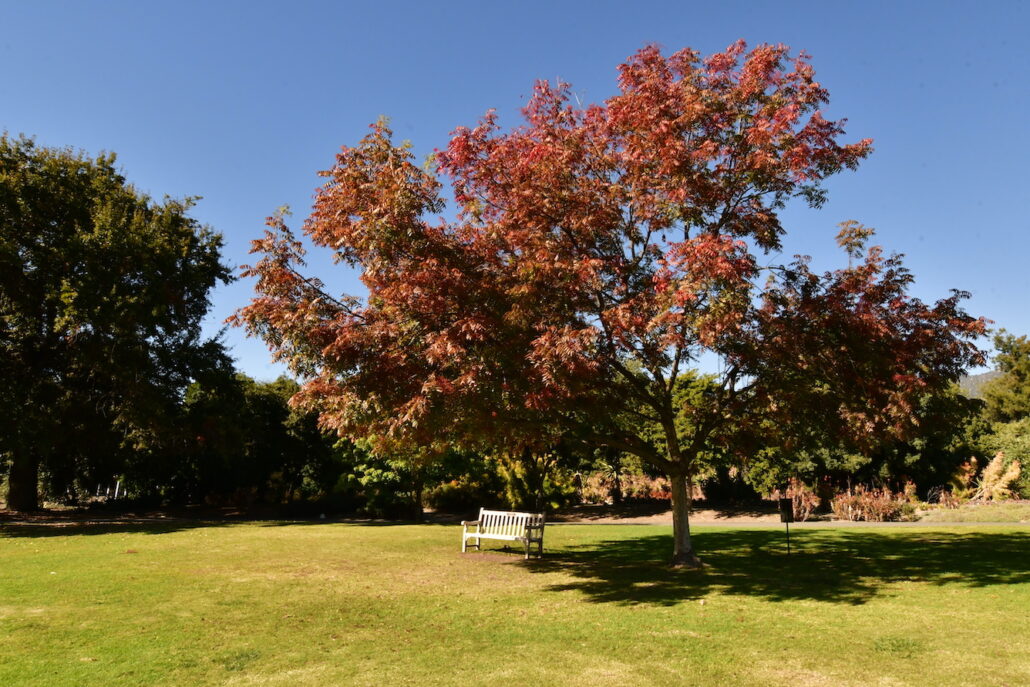
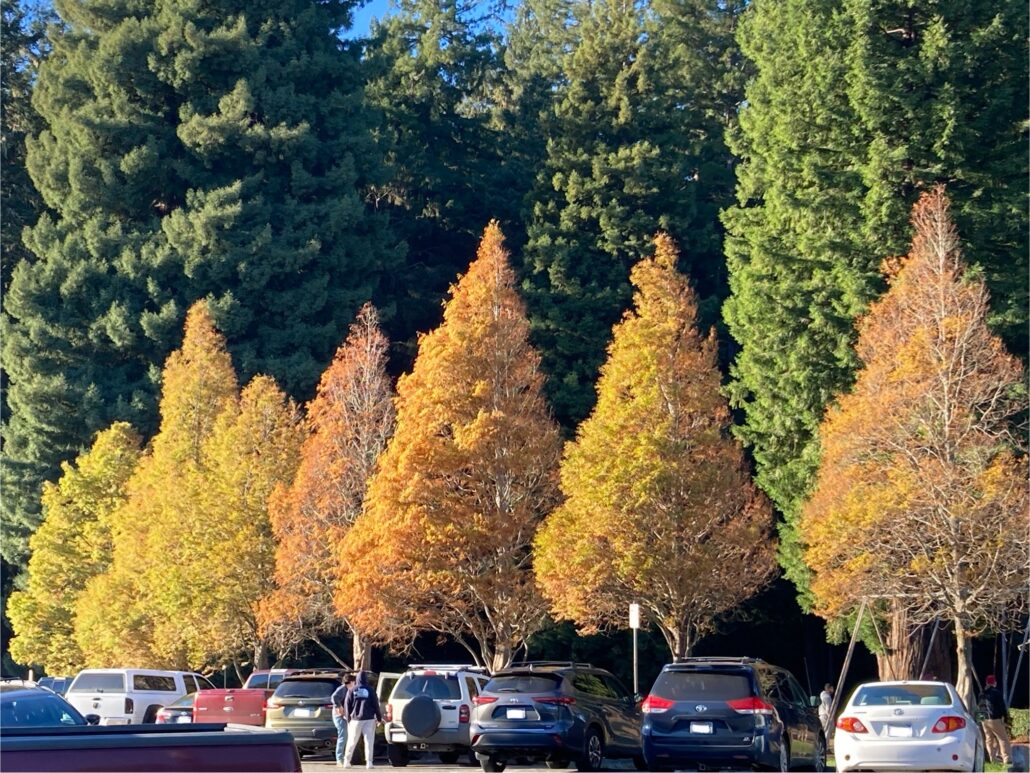
During a recent family trip to the Sequoia Park Zoo and Redwood Sky Walk in Eureka, Michelle Pontoni found blue skies with very little wind and hundreds of visitors.
“We parked near Sequoia Park where we found the trees behind the busy playground swing sets were glowing orange against the evergreen backdrop,” she said.
According to its website, “The Redwood Sky Walk inside the zoo is a self-guided interpretive experience designed to educate, inspire, and delight visitors. Learn about the rich hidden ecology of the world’s tallest trees from an entirely new perspective.
“100 feet above the lush and verdant forest floor, view the canopy and legendary old-growth and mature second-growth redwood trees closer than ever before.
“As the longest sky walk in the western United States, the Redwood Sky Walk is just under 1/4 mile to the end and back.”
Learn more about the zoo at
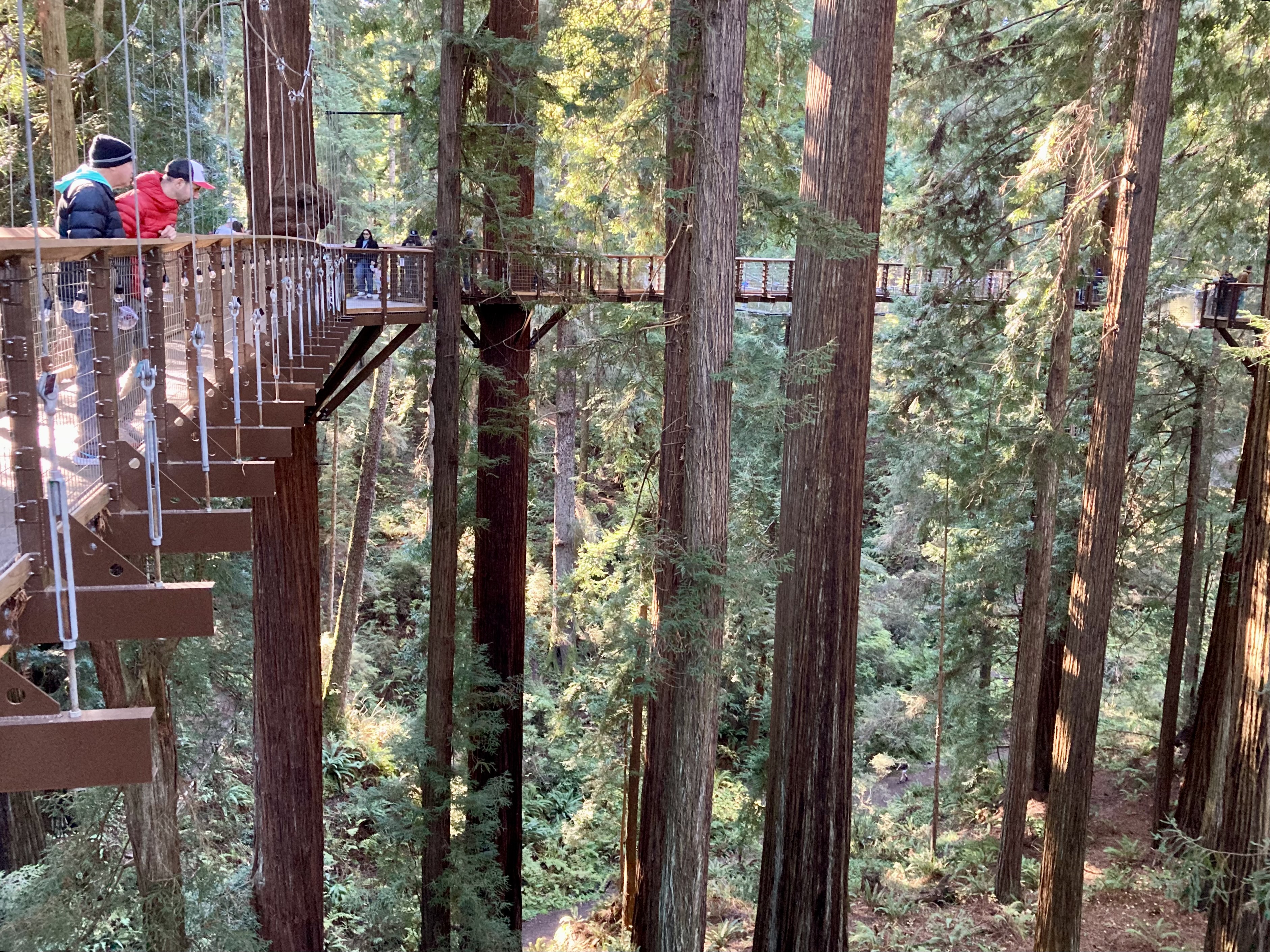
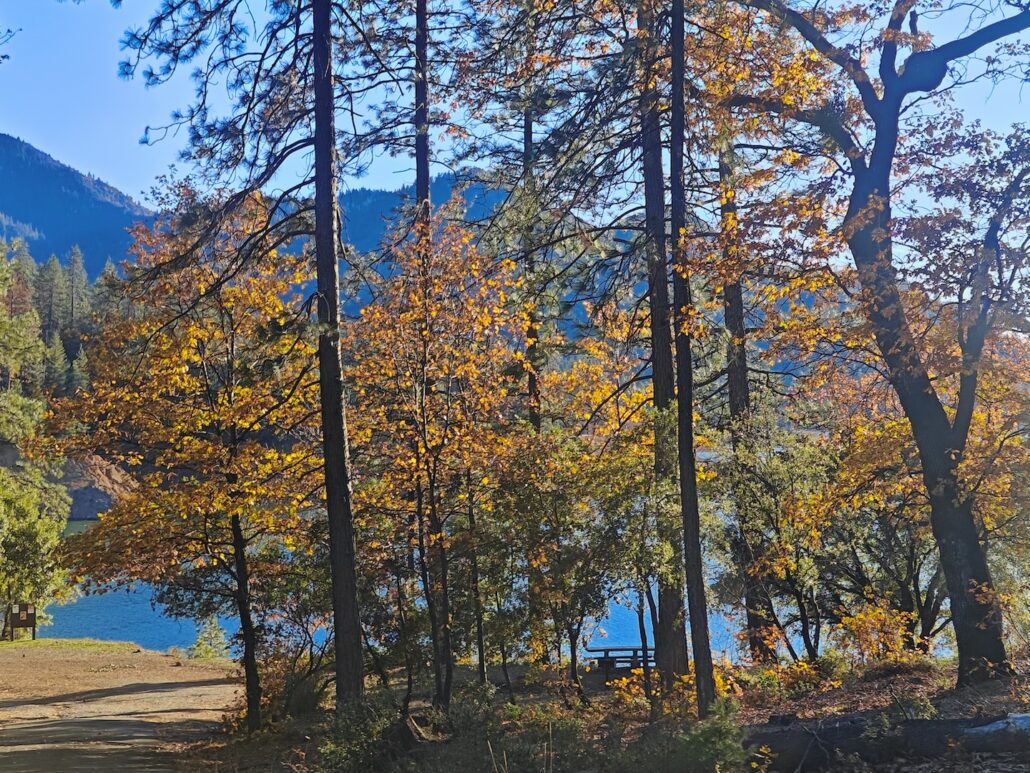
Matt Snoozle reported this week that Shasta Lake is still going strong with fall color.
Lake Shasta – 1,067′ – Peak (75-100%) GO NOW!
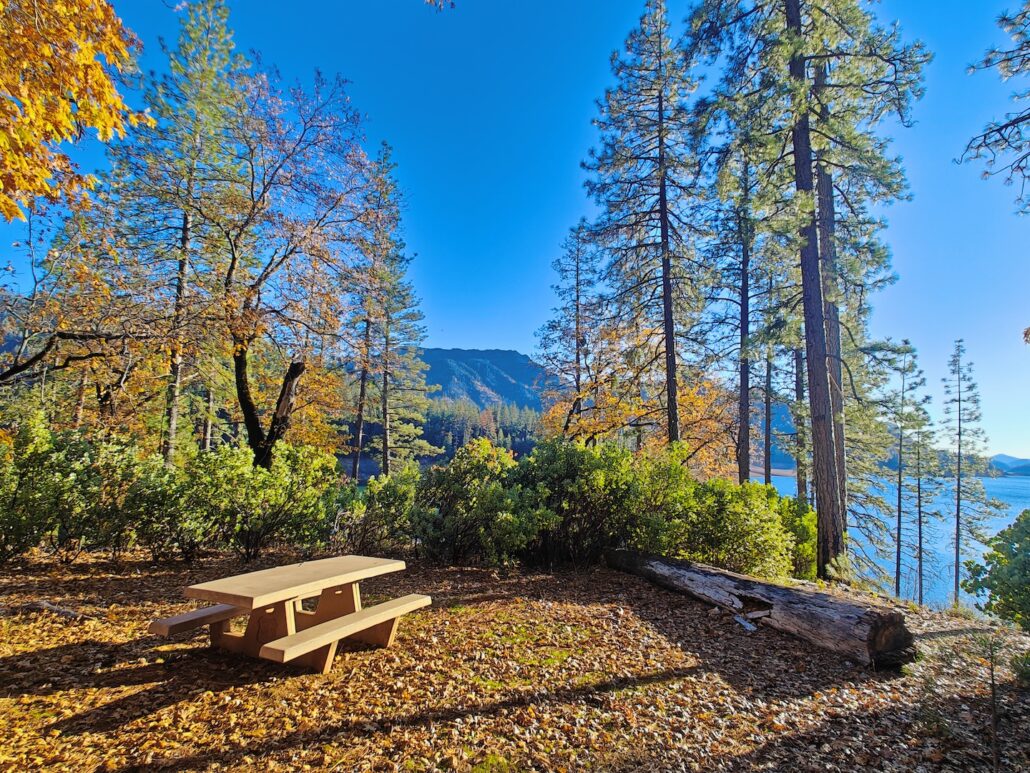
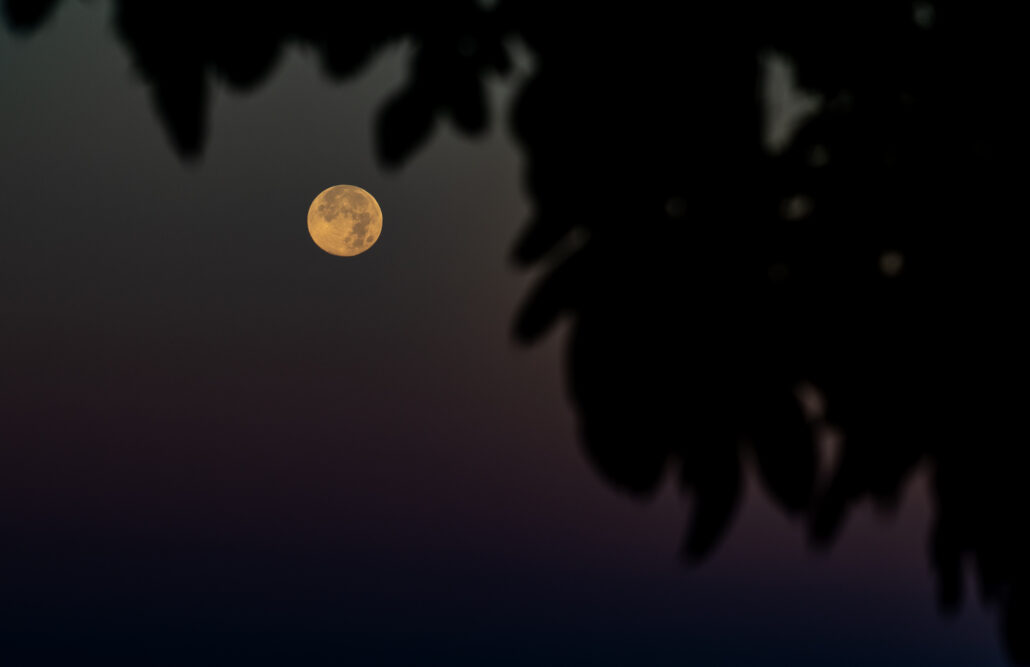
While traveling in the 1760s, Captain Jonathan Carver overheard the native-American description of the November full moon as a “Beaver Moon.”
He learned that native people called it that, because it appeared when beavers were finishing their preparations for winter.
“Beaver Moon” was not the only description for the November moon. The Old Farmer’s Almanac explains that indigenous Americans had many names for this moon.
The Dakota and Lakota called it a “Deer Rutting Moon.” The Tlinget described it as a “Digging” or “Scratching Moon” when bear would dig their winter dens, while the Algonquin called it a “Whitefish Moon” as it appeared when fish spawned. The Cree and Assiniboine people described the November moon as a “Frost Moon” and the Anishinaabe used the term “Freezing Moon.”
Let’s just say that whatever you call it, it’s beautiful.
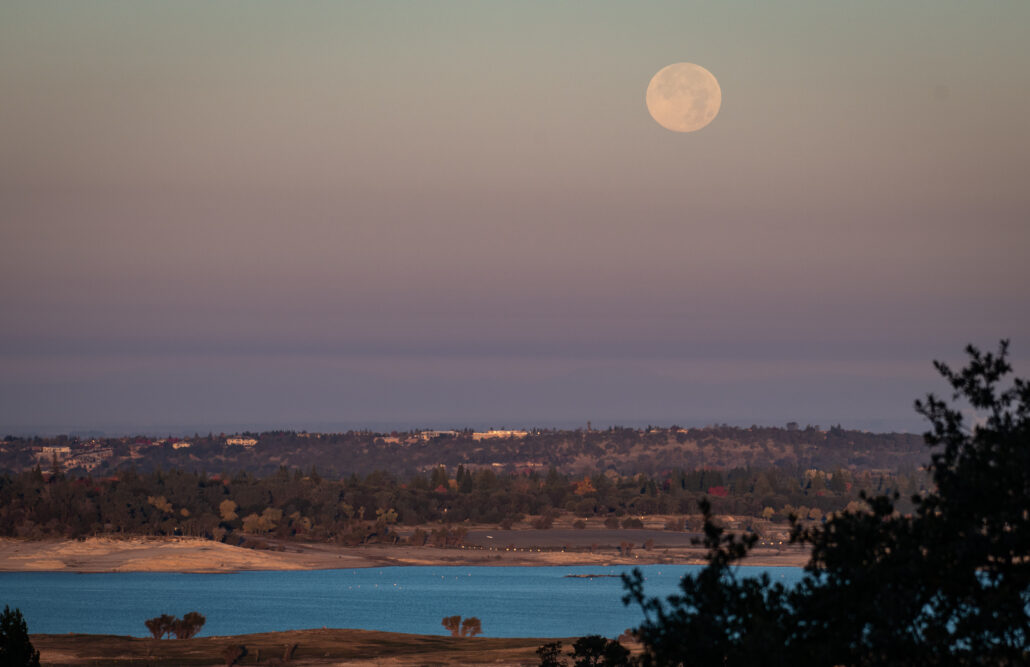

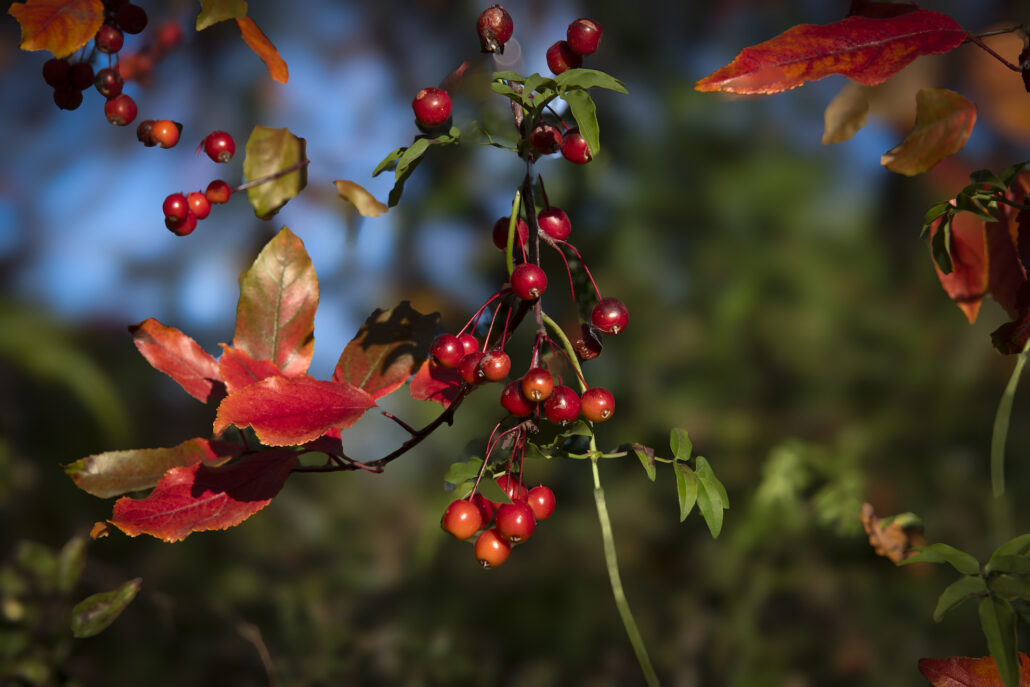
Davis is still looking quite beautiful as of earlier this week when Philip Reedy took a break from putting up Christmas decorations to walk a couple of blocks around his house.
“The trees are in full autumn glory right now,” he says. “The Gingko Biloba are all bright yellow and the Chinese Pistache and Chinese Tallow are great as well.”
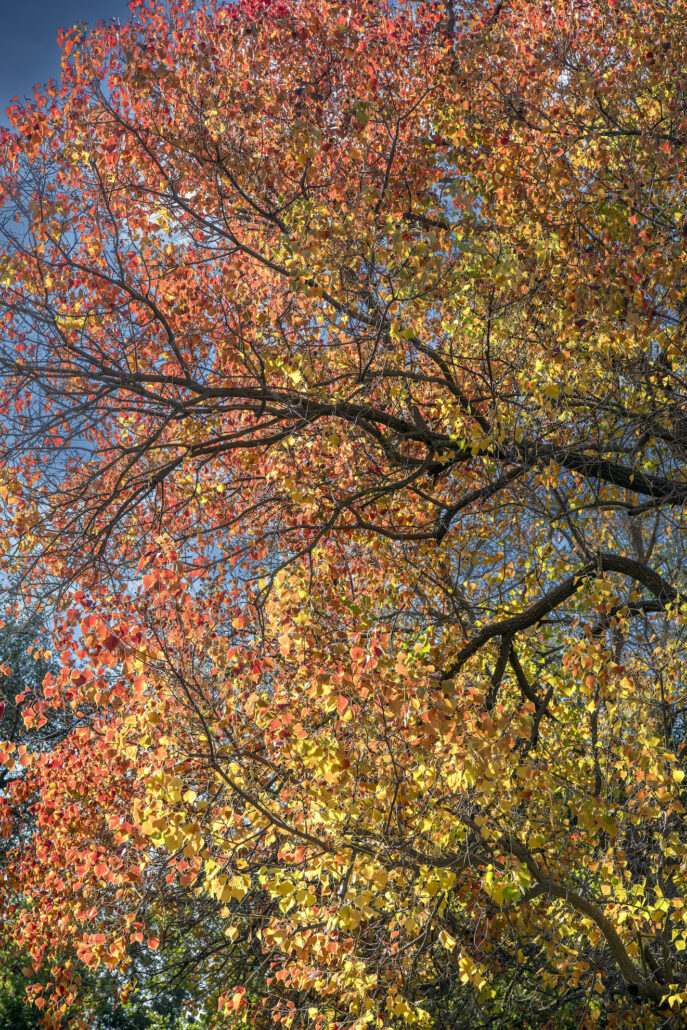
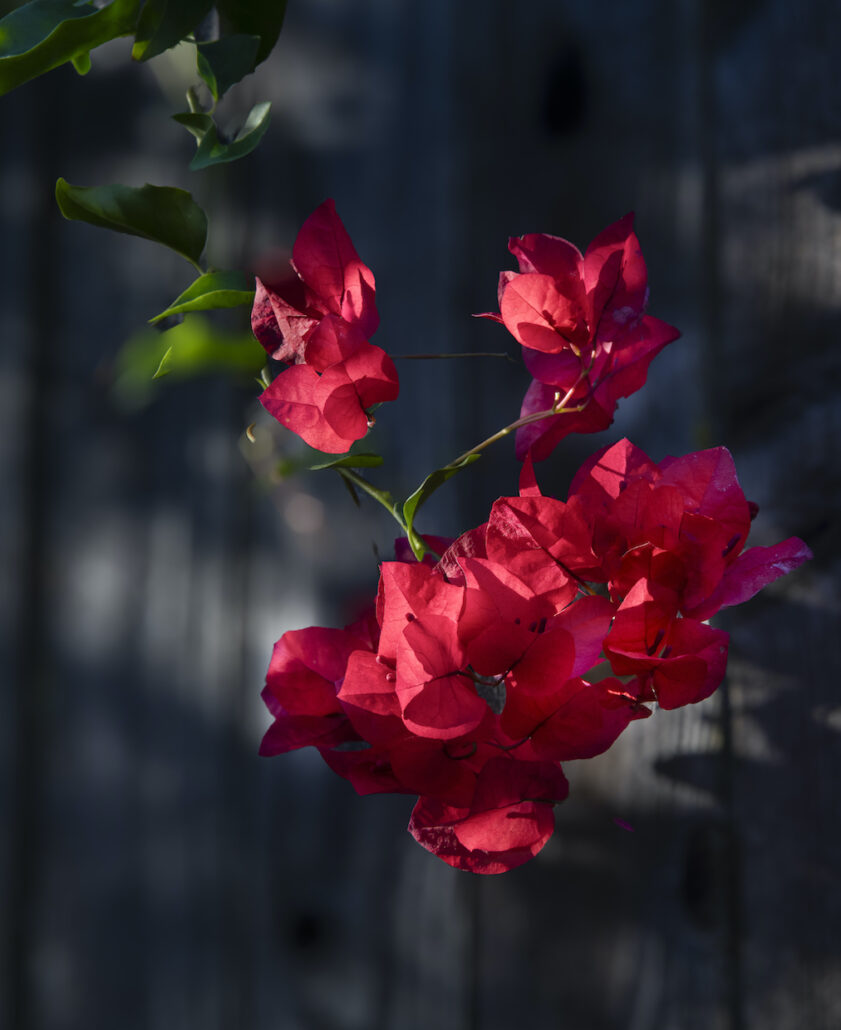
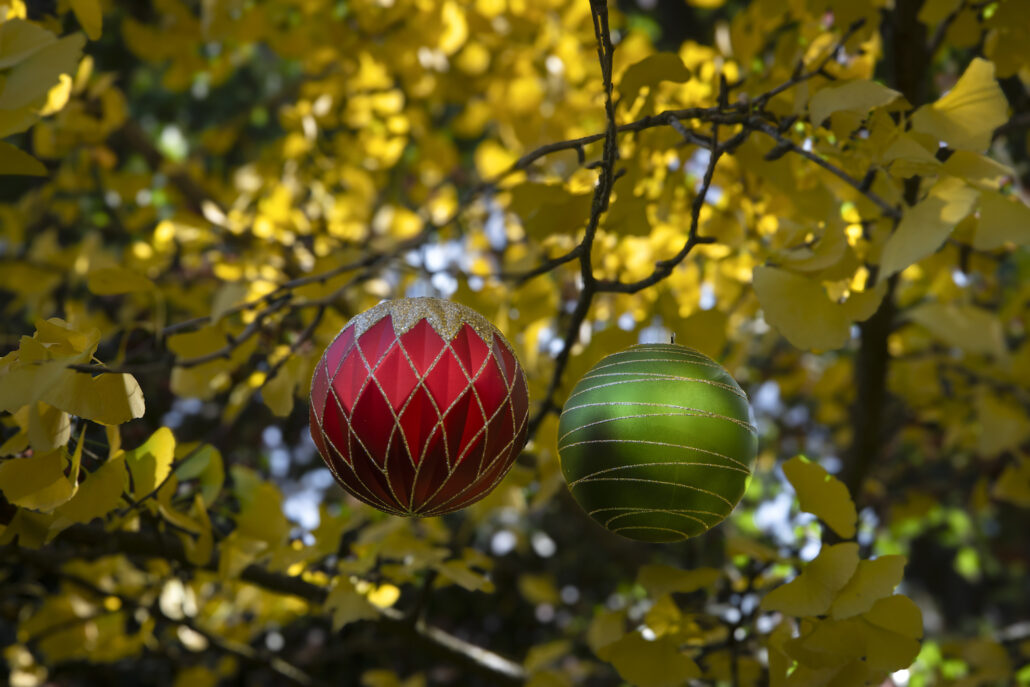

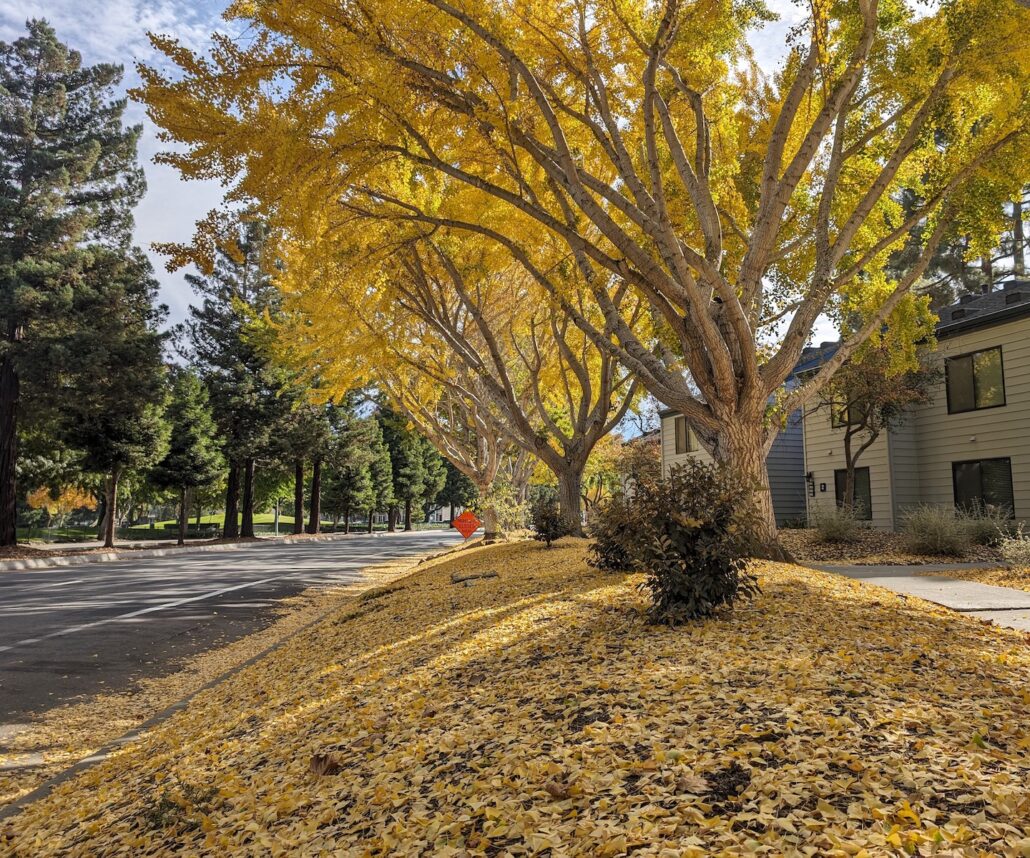
Color spotter Vishal Mishra found some beautiful color right in his town of Mountain View as well as neighboring Palo Alto this week.
Colors are surely peaking now and it looks like a colorful Thanksgiving weekend ahead, he said on Wednesday.
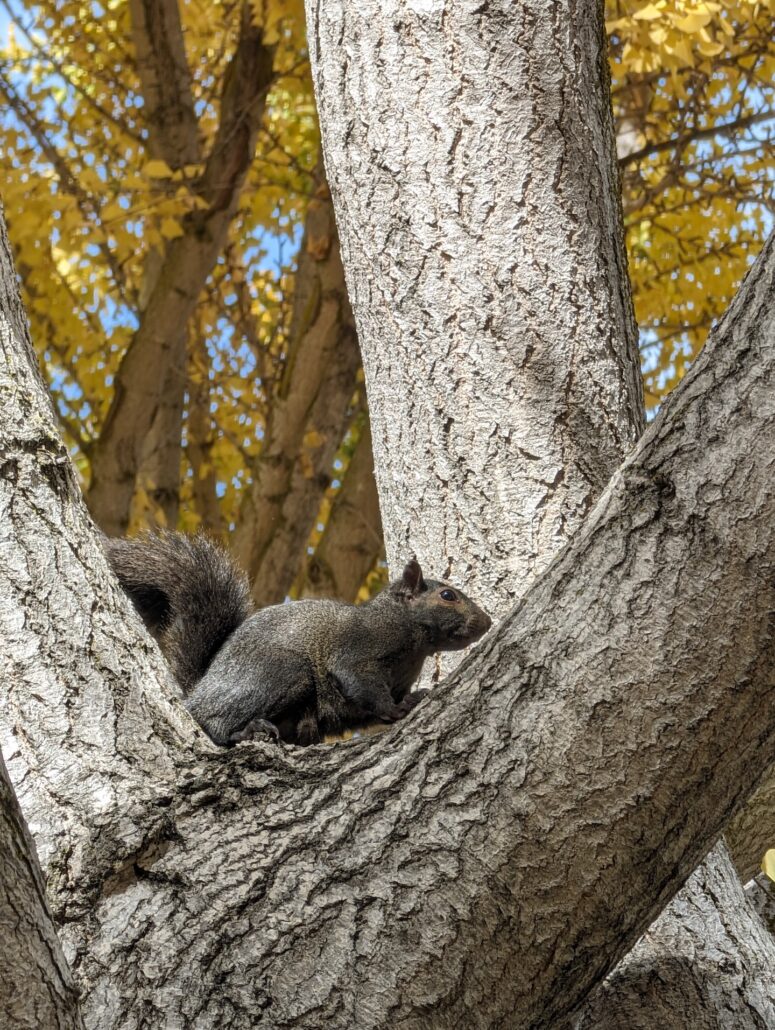
On this Thanksgiving Day, californiafallcolor.com is thankful for this year’s color spotters who are the heart and soul of making this website happen. In a year of transition to new ownership, we appreciate your patience, understanding and encouragement as we navigated the busy world of fall color in California.
For 2023 they are as follows:
Philip Reedy, Samantha Lindberg, Angie Plaisted, Michael Beatley, Jeff Simpson, Betsy Forsyth, Peter Asco, John Poimiroo, Dakota Snider, Liz Grans, Alicia Vennos, Lucas Yan, Amanda Carlson, Robin Roberts, Jim Adams, Jennifer Natale, Michelle Pontoni, Michelle English, Jeff Titcomb, Jake Edwards, Rodgersl Duncan, Gary Hromada, Peter Robbins, Clayton Peoples, Shanda Ochs, Dave Pabinquit, Hanna Summers, Risa Wyatt, Brandon Downey, Gary Skipper II, Ruth Hartman, Bob Blesse, Christopher Adkins, Gary Young, Lance Pifer, Vishal Mishra, Tom Pitts, Tim Vandehey, Zhibin Guan, Betty Bishop, Karen Kleven, Beth Reid, Jim Van Matre, Ellie Hinrichs, Matt Snoozle, Sharon Jiang.
If somehow we missed you, please know it wasn’t intentional. We are truly indebted to every contributor.
As the new Publisher and Editor of the site, I did not fully understand the full breadth of what the site’s Founder, John Poimiroo, had created until I dove in this year. The level of passion and excitement for fall color in the Golden State is extreme and beautiful. It was more than I could have ever imagined, which just goes to show we have something pretty special here.
The amount of content we received this year was astounding and I often had difficulties keeping up with postings. However, just as I would be on the brink of frustration that I wasn’t doing the site justice, one of you would send an encouraging word or comment and I’d be off and running again.
Again, I appreciate everyone’s patience as I learned the ropes and found my groove. I’ll only get better from here!
Special thanks are expressed to Inyo County Tourism, Bishop Area Chamber of Commerce & Visitors Bureau, Mono County Tourism, Destination Plumas County and Roadsurfer for underwriting California Fall Color, and to the many reporters and media who carried our reports and gave attention to what we have shown about California’s fall color.
Our deepest thanks go to the more than 68,000 readers who read, followed, reacted to and commented here and on our social media pages. You are still, after all, the reason we do this.
Special thanks to my newborn son, Will. Your entrance into this world gave me the time and the opportunity to work on this site, and the adventure became a bonding experience for us. And to my husband and daughter for putting up with me as I took on a new endeavor that took time away from them.
The photographs selected for this year’s video represent the Best of the Week photos from this year’s weekly reports. They demonstrate some of the finest photography of 2023. To be considered for the video, photos must be high resolution (300 dpi), not watermarked, and submitted within one week of capturing them.
A special thanks to my good friend, Dakota Snider, for putting together this year’s video. You are an all-around good human and I thank you for your friendship.
And of course, I would be remiss not to thank the man who created this site and has mentored me through this first season. I will forever be indebted to the talented Mr. John Poimiroo for passing on his passion project to me.
While autumn doesn’t end today, we begin to dial back reports and will post less frequently. We’ve also stopped sending weekly updates to meteorologists, travel and outdoor writers.
So, enjoy your Thanksgiving Day and plan an Orange Friday of fall color spotting, tomorrow.
California – Peak (75-100%) GO NOW! – In our hearts, California is always at its best. We’ll see you next autumn, dude.
On Thanksgiving Day, California Fall Color posts its message of thanks and video review of autumn 2023. It will be the twelfth annual “California Fall Color Looks Back” video.
Although CaliforniaFallColor.com went live in 2009, it wasn’t until 2012 that our first video review was posted. In advance of seeing “California Fall Color Looks Back at 2023,” here are videos from autumns past.
Each of the photographs selected for these videos is representative of what happened that autumn, the extent and diversity of fall color seen across the state, and some of the finest photographs taken that year.
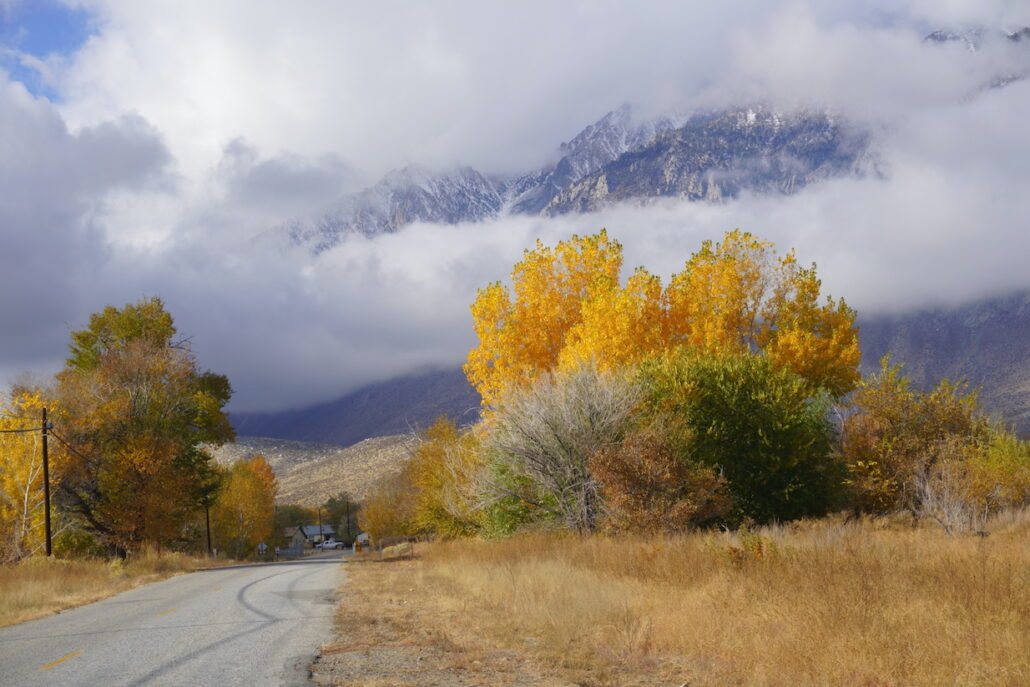
Some locations in the Owens Valley still have some fall color shine, according to Lance Pifer who visited the area this week, but it won’t last long.
GO NOW!
